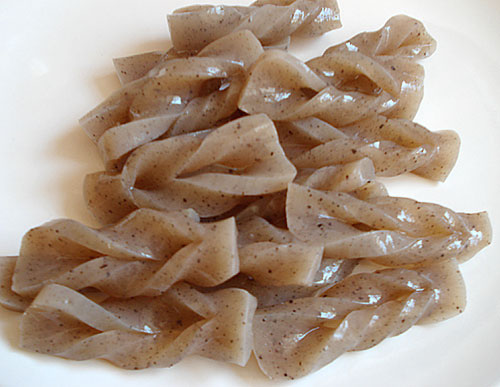 |
| Fall = Grape Season |
While it's definitely not as cold as winter proper during December, it feels like fall has already come and gone. My house is a nice 20 degrees Celsius right now, but outside these nights have been dropping to 12 or 13 degrees (around 53-55 F). ...so I guess that's not too different than actual fall weather. I don't know why I'm feeling so cold then! Today hit a high of around 16C/60F... which is still warmer than San Francisco is in the summer! Perhaps it's on account of me just sitting here and the fact that when I ride my bike it gets ridiculously cold from the windchill (and the fact that everything is downhill so I don't work nearly as hard as I do on the ride back home).
But fall seems like it's rather short this year, and that it's getting colder faster. Maybe last year was just really warm for a long time. Probably. I don't know why I'm complaining though; I like this cooler weather - as long as I can wear a jacket!
With the full arrival of fall, the fall flavors and dishes are out in force in restaurants and grocery stores. This means chestnuts (kuri) and the seasonal fish (aji...maybe?) (of course though. I feel like there's always a seasonal fish). OH. And mushrooms. Mushrooms are really really popular, though they tend to come more towards the end and middle of fall. The inclusion of any of these in a dish automatically gives it a kind of autumn feeling, according to my Japanese co-workers. I went to a restaurant for a welcome to Japan party for this group of Aussies who are doing an exchange program with my base school, and they had this amazing rice that had chestnuts and mushrooms in it. The irony of it all is that when I came to Japan, I really really really didn't like chestnuts or mushrooms (or sweet potatoes, but that's a winter food). But now I don't mind them, and I even kind of like chestnuts. What's happened to me?!
 |
| Chikuwa, or tube fish cakes |
 |
| Konnyaku |
Actually, I think oden is more popular and more commonly eaten than sushi is. Sushi has become this kind of... global beast, though I suppose at its roots it will always be Japanese (though, I've shown my Japanese co-workers and students the pictures of the different rolls from the states like the catepillar roll and gotten quite amusing responses). Like seriously, you'll find a person who doesn't like to eat shrimp before you find someone who doesn't like oden. It's that widespread. Plus it also uses a bunch of ingredients which I think are really really Japanese; konnyaku, chikuwa, boiled egg (though maybe that's just Asian since I know Chinese dishes have that in it too... I think), daikon. Like seriously. It's just missing mushrooms. This might be why with foreigners it's kind of hit or miss on liking oden. It also has a very distinct... smell. Not the same as natto but... it's definitely... one of those Japanese foods.
Oh, also grapes, like pione and muscats, are finally in season! HOORAY!
 |
| Hand for size perspective |
They also come with a monster price tag usually, especially if you don't live in a grape growing region! At the super market, one bunch of grapes (roughly large enough to sit in someone's smallish hands) sells for somewhere around 600 yen, though if you can get it directly from the people who grow it, they go for as cheap as 200 yen!
This is where it's really awesome to be at schools who grow grapes and stuff.
One thing that foreigners notice when Japanese people eat grapes though (other than the monster size and the price) are the manner in which Japanese people eat grapes. Because they don't just down them like candy like we do in the states, popping one after another into their mouths. Rather, they take the time to peel every single grape one by one. As in, peel the grape, pop into mouth, discard skin. Peel grape, pop in mouth, discard skin.
When I first got here, this completely baffled me. Why on earth would you throw away the skin? It tastes pretty good, and it's probably where all the nutrition is. And like, seriously, why would you create more garbage for yourself when there are less trash cans to begin with in Japan? I guess it makes it last longer, but it took me ages to (grudgingly) accept that peeling grapes was probably for the better.
While not all Japanese grapes are the same, the kind that are popular to eat (and the ones pictured) have a really really tough skin. It's thicker than normal grapes (kind of like how Japanese hot dogs/sausages have a thicker casing). So they're actually pretty easy to peel without completely squishing the grape. The skin comes off pretty easy. But, what really sold me is the fact that this skin is usually really really bitter! Like, do not want kind of bitter. The grape actually tastes way better when you peel it because you're not eating the bitter, hard to chew (and probably digest) skin; all you get is sweet juicy grape flesh. Mm. Grape flesh. Grape meat? I'm not sure what you call it.
So yes, if you come to Japan, if the grape seems like it has a thick skin, please try peeling it because it will ultimately improve your grape eating experience.
No comments:
Post a Comment